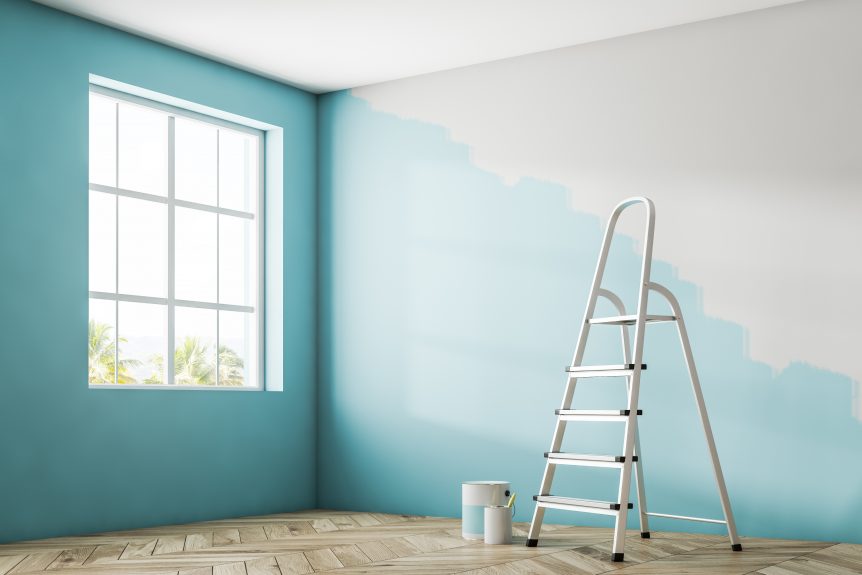Your Guide To The Three Ps: Prepping, Priming, And Painting
Shortcuts are great for avoiding traffic or beating video games, but not so much for painting. In fact, no matter the size of the painting project, its success really does depend on how much time and effort is put into the preparation. There’s simply no way around it.
Primer is the essential foundation of every paint job. It helps paint to adhere to the surface by making it more “accepting” of the finish coat; it blocks stains and tannins from bleeding through; it penetrates and seals problem substrates; and finally, it improves the color performance and prolongs the durability and smoothness of your paint job.
1. Before you Prime
Preparation Tips
Before you begin, move all furniture out of the room. Larger items can be placed in the center of the room and covered with a plastic or canvas drop cloth.
Takedown any pictures, wall hangings or removable fixtures as well as the nails holding them up. This is also the time to remove electrical plates and switch covers as well as air vents you don’t want to get paint on. (This is a step I have skipped before – I do not recommend skipping!)
Scrape off any loose, flaky paint. Patch holes and repair any other imperfections with spackling compound. Allow to dry and then sand down until the surface is smooth.
Clean the walls with a sponge and TSP (Trisodium Phosphate should be used if the walls are greasy, especially in the kitchen) or a mild cleaning solution of water and detergent. Rinse the sponge frequently and repeat as necessary. Once dry, go over the surface with a microfiber cloth or a trap-and-loc style duster.
Collect and assemble all of the tools and supplies you’ll need for the job: paint, stir sticks, brushes, rollers, and painting tape.
Apply a high quality painter’s tape on trim, baseboards, window, and doorframes to protect everything you don’t want to get paint on.
Secure a drop cloth to the floors to protect carpeting, linoleum or hardwood flooring.
2. Before you Paint
Priming Tips
It is especially important to use primer when painting a new wood or surface that has never been painted before, or when repainting a surface that is uneven, stripped, or badly deteriorated (sand it down before priming). Prime the walls if the lighter color is being painted over a darker color. Semi-gloss paints need a coat of primer as they tend to absorb unevenly.
Match the primer to the job. Tinting your primer first will give you a head start when painting darker colors and will require fewer coats.
Remember that latex-based can’t be used over oil-based paints. Ask the experts at Harrison Paint Co. for advice on the best primer to use.
Lastly, be sure to start painting only after the primer has dried completely. Check the paint can’s instruction to find out how long to wait between coats.
PRO TIP: There are 2-in-1 paint and primer products available on the market, but it’s important to note that they work well on already painted surfaces, not never-before painted surfaces. While they may seem to eliminate a step, 2-in-1 products may require extra coats to give as effective coverage as the traditional primer and paint process.

